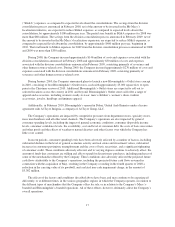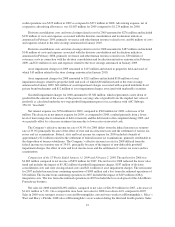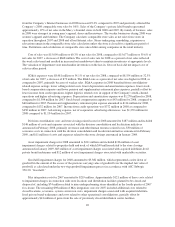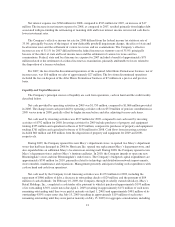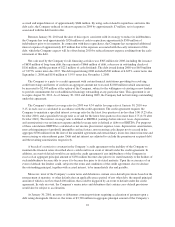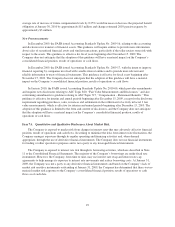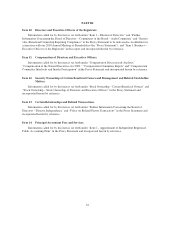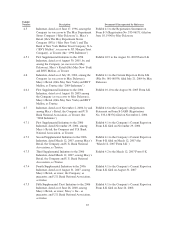Macy's 2009 Annual Report Download - page 31
Download and view the complete annual report
Please find page 31 of the 2009 Macy's annual report below. You can navigate through the pages in the report by either clicking on the pages listed below, or by using the keyword search tool below to find specific information within the annual report.The Company receives certain allowances from various vendors in support of the merchandise it purchases
for resale. The Company receives certain allowances as reimbursement for markdowns taken and/or to support
the gross margins earned in connection with the sales of merchandise. These allowances are generally credited to
cost of sales at the time the merchandise is sold in accordance with ASC Subtopic 605-50, “Customer Payments
and Incentives.” The Company also receives advertising allowances from more than 1,000 of its merchandise
vendors pursuant to cooperative advertising programs, with some vendors participating in multiple programs.
These allowances represent reimbursements by vendors of costs incurred by the Company to promote the
vendors’ merchandise and are netted against advertising and promotional costs when the related costs are
incurred in accordance with ASC Subtopic 605-50. Advertising allowances in excess of costs incurred are
recorded as a reduction of merchandise costs. The arrangements pursuant to which the Company’s vendors
provide allowances, while binding, are generally informal in nature and one year or less in duration. The terms
and conditions of these arrangements vary significantly from vendor to vendor and are influenced by, among
other things, the type of merchandise to be supported. Although it is highly unlikely that there will be any
significant reduction in historical levels of vendor support, if such a reduction were to occur, the Company could
experience higher costs of sales and higher advertising expense, or reduce the amount of advertising that it uses,
depending on the specific vendors involved and market conditions existing at the time.
Physical inventories are generally taken within each merchandise department annually, and inventory
records are adjusted accordingly, resulting in the recording of actual shrinkage. While it is not possible to
quantify the impact from each cause of shrinkage, the Company has loss prevention programs and policies that
are intended to minimize shrinkage. Physical inventories are taken at all store locations for substantially all
merchandise categories approximately three weeks before the end of the fiscal year. Shrinkage is estimated as a
percentage of sales at interim periods and for this approximate three-week period, based on historical shrinkage
rates.
Long-Lived Asset Impairment and Restructuring Charges
The carrying values of long-lived assets are periodically reviewed by the Company whenever events or
changes in circumstances indicate that a potential impairment has occurred. For long-lived assets held for use, a
potential impairment has occurred if projected future undiscounted cash flows are less than the carrying value of
the assets. The estimate of cash flows includes management’s assumptions of cash inflows and outflows directly
resulting from the use of those assets in operations. When a potential impairment has occurred, an impairment
write-down is recorded if the carrying value of the long-lived asset exceeds its fair value. The Company believes
its estimated cash flows are sufficient to support the carrying value of its long-lived assets. If estimated cash
flows significantly differ in the future, the Company may be required to record asset impairment write-downs.
If the Company commits to a plan to dispose of a long-lived asset before the end of its previously estimated
useful life, estimated cash flows are revised accordingly, and the Company may be required to record an asset
impairment write-down. Additionally, related liabilities arise such as severance, contractual obligations and other
accruals associated with store closings from decisions to dispose of assets. The Company estimates these
liabilities based on the facts and circumstances in existence for each restructuring decision. The amounts the
Company will ultimately realize or disburse could differ from the amounts assumed in arriving at the asset
impairment and restructuring charge recorded.
The Company classifies certain long-lived assets as held for disposal by sale and ceases depreciation when
the particular criteria for such classification are met, including the probable sale within one year. For long-lived
assets to be disposed of by sale, an impairment charge is recorded if the carrying amount of the asset exceeds its
fair value less costs to sell. Such valuations include estimations of fair values and incremental direct costs to
transact a sale.
25




